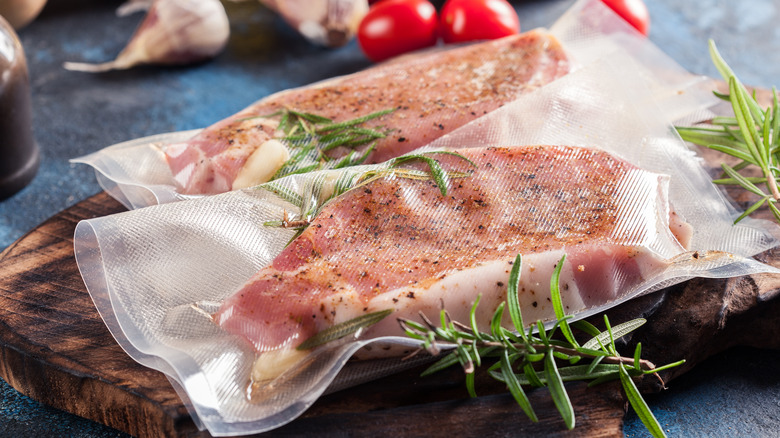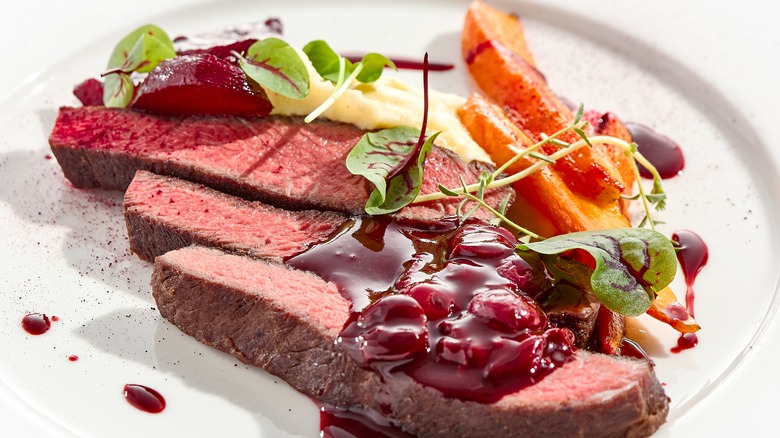Why Does Your Sous Vide Meat End Up Rubbery?
If you've ever marveled at the tender texture a filet mignon that melts in your mouth like butter, soft asparagus that maintains its bite, or cloud-like, fluffy eggs, chances are they may have been cooked sous vide. The cooking technique — which means "under vacuum" in French, as Bon Appétit shares – is used in many high-end restaurants to cook food as close to perfection as one can get by utilizing a water bath and strict temperature control. But this cooking technique is not only for Michelin-starred chefs.
Home cooks love to use this technique with a wide variety of meats, fish, veggies, and other produce to help retain moisture. However, because sous vide requires the utmost precision, one wrong step and you can easily overcook your food, ending up with meat that has a rubbery consistency. The last thing any novice chef or food lover wants to do is splurge on a perfect cut of meat, only to have it come out lackluster — or worse, inedible. Luckily, there is a way to avoid this cooking mishap at the very start of the sous vide process that works well for cuts of meat that are particularly fatty, Delishably explains.
How to avoid cooking tough and rubbery meat sous vide
While the protein in beef, specifically, gets tender when you're cooking it low and slow via the sous vide method, sometimes, the fat doesn't fully render, according to Delishably. That's because it needs to be exposed to high heat, which (as any sous vide expert knows) will never happen when using this technique properly, because the water temperature is constant. So if you're cooking with a cut of meat that has a lot of fat, Delishably suggests searing the meat in a pan first to start the rendering process before you sous vide. In addition to the pre-sous vide sear, Digital Trends says you can simply cut off the fat.
Once you determine how to handle the fat on you meat, it's all in the temperature control. Sous vide machines will bring water up to a constant temperature to ensure cooking is controlled and gradual, so patience is key to mastering the art of this culinary technique. This means your food will take longer to cook: a 12-ounce New York strip can cook for just over two hours, Bon Appétit notes, but the results are worth it.

